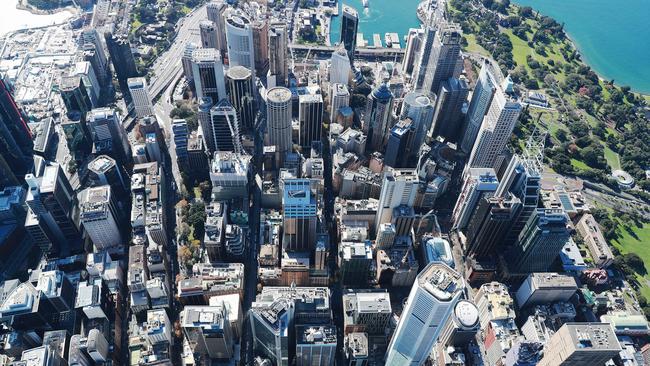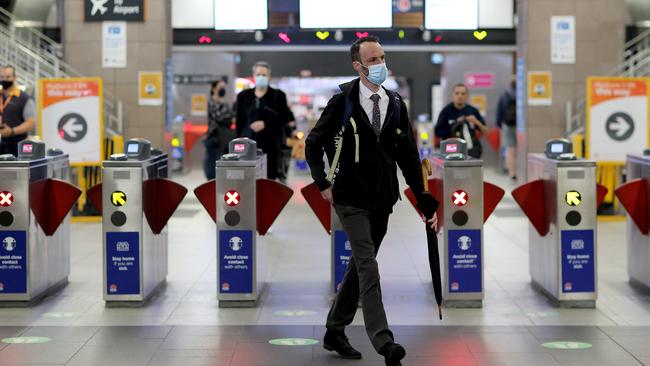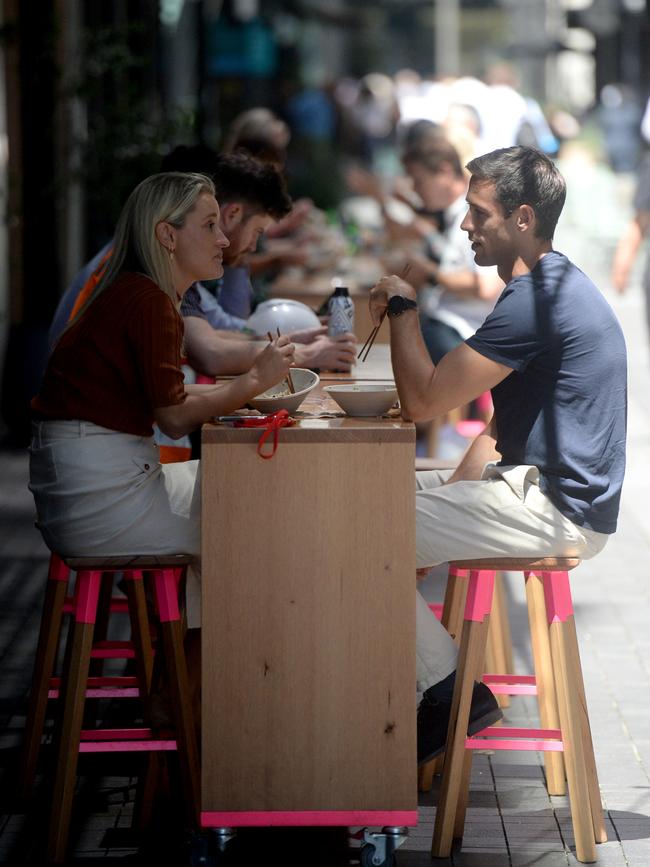The post-pandemic office is already here — in Australia
Australia, where COVID-19 cases are low, is at the vanguard of worldwide efforts to reopen offices.

When Shant Soghomonian, a senior sales director at Dell, went back to his office in Sydney last month after a year of remote work, the space looked the same as he remembered, and he didn’t even have to wear a mask. But when he stepped into a sanitised conference room for his first in-person meeting of 2021, he realised he had forgotten how to greet colleagues in person.
“Do you shake their hands? Do you do the elbow bump?” recalls Mr Soghomonian. A consensus eventually arose around “predominantly elbows,” he says.
Mr Soghomonian and about 2,000 of his Dell colleagues in Australia have been able to go in-person to their offices for months. On March 9, Dell’s six Australia offices entered their third and final phase of reopening. Meanwhile, about 41,000 Dell employees in the U.S. remain fully remote — at “phase 0” — for the near future, according to a Dell spokesman.
Australians’ return to work gives a taste of what the post-pandemic office might look like in other countries soon. The country of nearly 26 million people has been at the vanguard of the worldwide effort to reopen offices. Its strict early lockdown, intensive contact-tracing and aggressive quarantine protocols have helped keep daily new cases very low for months and total number of deaths under 1,000 since the pandemic started, according to its Department of Health. Offices of multinational firms like Adobe, Facebook, and Dell started to reopen as early as June.
But it hasn’t been a straight line from quarantine to unmasked meetings. Most offices had to slowly phase back re-entry, prepare for workers’ skittishness in communal spaces and in meetings, and counter people’s reluctance to commute again.

Earlier accommodations to a highly contagious virus still shape office life. Dell still uses a desk reservation system and there are no more cookie jars in the break room, says Angela Fox, a Sydney-based managing director. Hand-sanitiser pumps are everywhere, meeting room doors are tagged with signs to indicate that they’ve been sanitised, and the offices’ air-handling units have upped their fresh air intake from 15 per cent to 40 per cent for better ventilation. Facebook, which has two offices in Australia, cut its buffet and now serves workers plated meals, says Will Easton, the company’s managing director for Australia and New Zealand.
“Back in November, people were afraid to touch shared milk cartons for their coffee or be in a lift together, which caused logistical nightmares in a skyscraper,” recalls Robbie Robertson, a Sydney-based managing partner of consulting giant Deloitte, which has over 9,000 employees in Australia and started reopening in October to general staff.
Given Australia’s extremely cautious approach to new Covid cases, even a tiny number of new infections can lead states into short, sudden lockdowns. Just last week, Dell temporarily closed its Brisbane office when the city declared a three-day lockdown to curb several new Covid cases, says Ms Fox.
Alongside Australia, offices in other places that have controlled the pandemic well, like New Zealand and Taiwan, have also been open for months. They share several factors, like robust healthcare systems and continuously low infection rates, that help them pass the risk assessment tools used by multinational firms like Dell and Adobe to help decide whether to reopen a site, according to executives at both companies.
At most large firms, in-person work remains voluntary, rather than mandated.
“It’s still important to keep the hybrid option available, because that’s what workers say they want,” says Mr Robertson at Deloitte.
But working from home may not be possible forever. A BCG report found that 63 per cent of 1,002 Australian employees across a range of companies wanted to continue some form of remote work as of June 2020. But only 40 per cent of 121 employers surveyed last December believed they would work in hybrid models in the future. Facebook, whose Sydney and Melbourne offices are currently at 50 per cent capacity, is “looking to remove the opt-in process” for returning to the office in Australia and New Zealand as they move toward 100 per cent reopening, sometime after July 2021, says Mr Easton.

There are also plenty of Australians who don’t have the choice to work remotely, including many who work in healthcare, retail, and “casual jobs” without fixed hours.
For multinational firms that have reopened for voluntary in-person work, phased return is a common theme. Nearly all of Dell’s offices in 73 countries were at phase 0 last spring, meaning everyone was remote. Phase 1, which Dell initiated in Australia last June, allowed for about 10 per cent of the workforce to return. Phase 2, which started between August and December, allowed workers back at 50 per cent capacity, and phase 3 allowed anyone back, without masks or social distancing requirements. Microsoft has six such phases and is in phase 5 in Australia, which allows workers back with some stipulations like completing a health declaration form and wearing masks while moving around, says Ingrid Jenkins, HR head of Microsoft Australia.
Office-space occupancy has been slowly increasing across the country, according to the Property Council of Australia, a lobby group that has been tracking rates since July 2020. Across six major cities’ central business districts, the office occupancy rate stood at 36 per cent last July. By February 2021, it rose to 48 per cent in Sydney and 65 per cent in Canberra, the capital.
Still, it can take some creativity to convince colleagues who became comfortable in their home offices that in-person work is worth the trek. Mr Robertson, of Deloitte, has been experimenting this year with incentives for his team of about 230 people.
He put snacks like fruit and candy back on the floor, created “Team Tuesday” meetings to share achievements, and instituted “Thirsty Thursday” happy hours.
“I want people to have FOMO [the fear of missing out] for not coming in,” he says. It seems to be working: He says that since January, the portion of his team using the office jumped from about 20 per cent to over 60 per cent.
Two weeks ago, he says, over 30 people stayed for drinks at a nearby pub until 6.30pm. “Everyone was like, this is so great — it’s almost like being in 2019.”
The Wall Street Journal





To join the conversation, please log in. Don't have an account? Register
Join the conversation, you are commenting as Logout